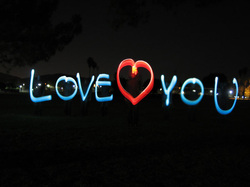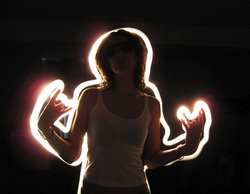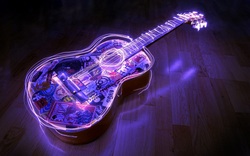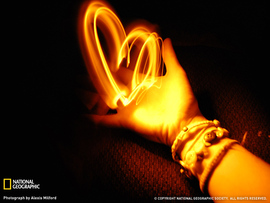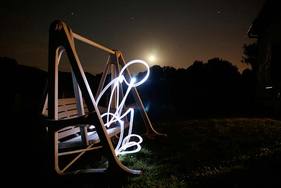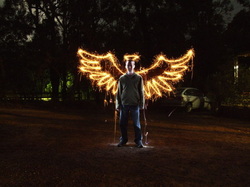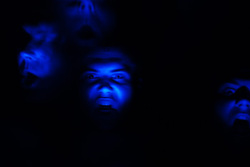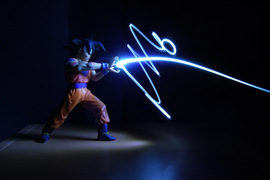Objective: Students will create a light painting by using a slow shutter speed in tv autoexposure mode.
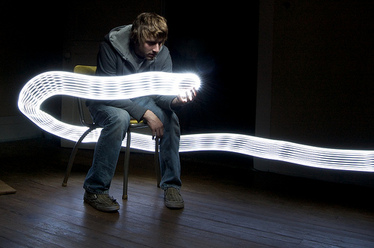
Light painting is a photographic technique in which exposures are made by moving a hand-held light source (ie: flashlight) or by moving the camera.
By moving the light source, the light can be used to selectively illuminate parts of the subject or to "paint" a picture by shining it directly into the camera lens. Light painting requires a slow shutter speed, usually a second or more.
By moving the light source, the light can be used to selectively illuminate parts of the subject or to "paint" a picture by shining it directly into the camera lens. Light painting requires a slow shutter speed, usually a second or more.
camera settings
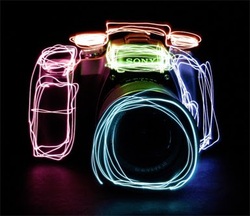
- Use a tripod
- Exposure Mode: Tv
- Shutter Speed: as long as you need to create your light painting (experiment with speeds from 3 seconds to 10 seconds)
- ISO: 100
- Focus: Manual (have your subject stand where the light painting will be happening before taking the shot and focus on them)
- Flash: on if you want to capture your subject in the photo with the light, off if you want only the light to stand out.
- Self-Timer: Set to 10 seconds- so that you can shoot the image as well as be in it or create the light effects yourself.
Ideas to try:
Your Assignment:
Use Tv mode and the camera settings listed above to create light paintings in a dark room. Experiment! Try out lots of different techniques and ideas. Try writing out words, outlining people or objects, drawing pictures with light, making a self-portrait, etc.
See schoology.com for instructions on what will be turned in.
See schoology.com for instructions on what will be turned in.
